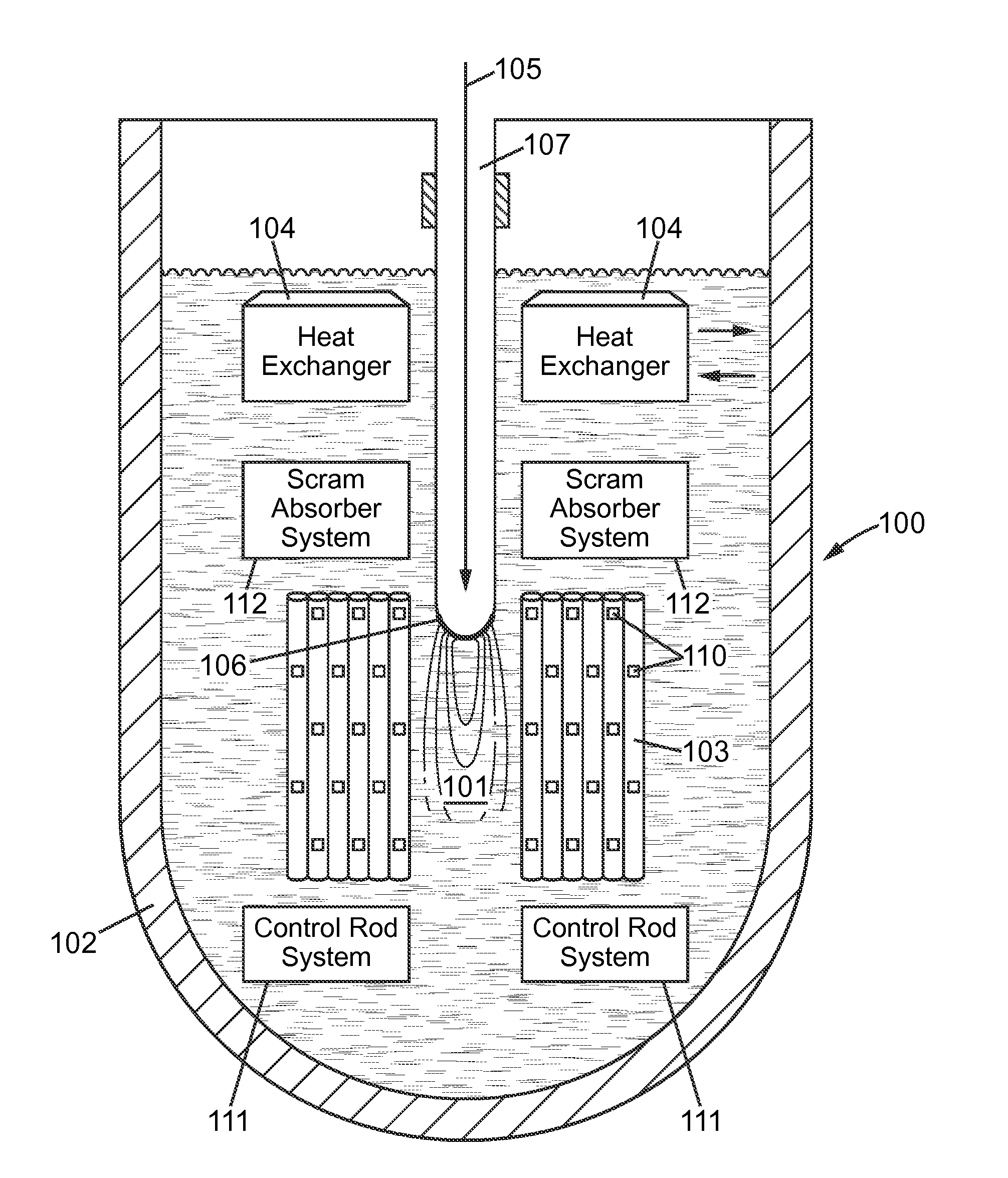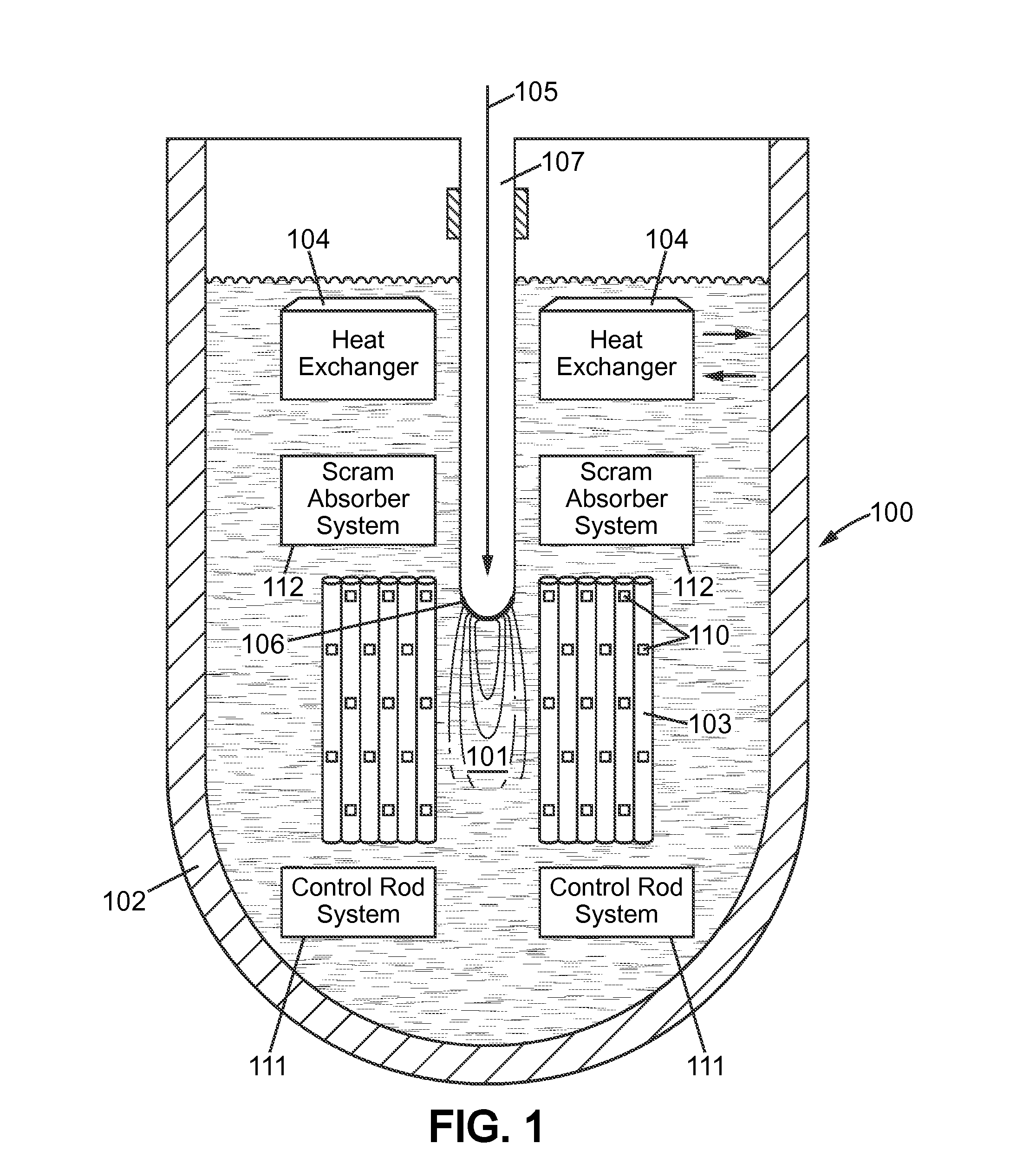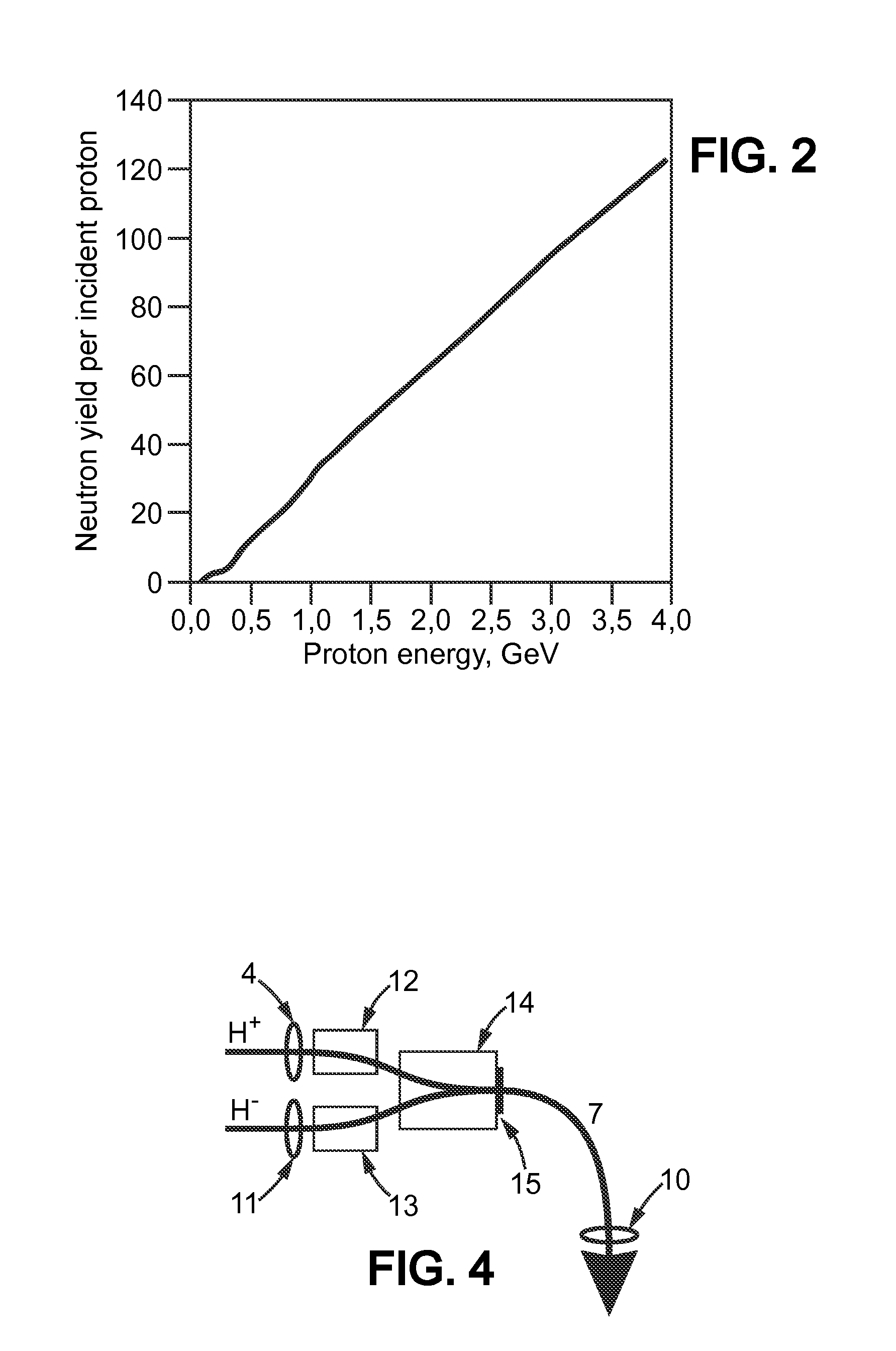Accelerator-Driven Nuclear System with Control of Effective Neutron Multiplication Coefficent
a technology of accelerator-driven nuclear system and co-efficacy, which is applied in nuclear energy generation, nuclear reactors, climate sustainability, etc., can solve the problems of unsatisfactory studies to define the necessary feedback control procedures, reactors become “prompt” critical, and the amount of neutrons is jus
- Summary
- Abstract
- Description
- Claims
- Application Information
AI Technical Summary
Benefits of technology
Problems solved by technology
Method used
Image
Examples
Embodiment Construction
[0067]The objects, features and advantages of the invention will now be illustrated in more detail with the aid of the following description of the preferred embodiments. Still further objects and advantages will become apparent from the consideration of the ensuing description and accompanying drawings. All those specific examples are intended for purposes of illustration only and are not to limit the scope of the invention.
[0068]In an ADS as illustrated schematically in FIG. 1, spallation neutrons are generated in a target 101 located in a central region of a reactor core 100 by directing high energy particles, such as protons having a kinetic energy of the order of 1 GeV, onto heavy nuclei forming the target. Among different materials suitable for spallation targets, Lead is advantageously used because of its high neutron yield when hit by high energy protons. Also Lead in the liquid phase can be used as a coolant to recover thermal power from the core. Other elements including B...
PUM
 Login to View More
Login to View More Abstract
Description
Claims
Application Information
 Login to View More
Login to View More - R&D
- Intellectual Property
- Life Sciences
- Materials
- Tech Scout
- Unparalleled Data Quality
- Higher Quality Content
- 60% Fewer Hallucinations
Browse by: Latest US Patents, China's latest patents, Technical Efficacy Thesaurus, Application Domain, Technology Topic, Popular Technical Reports.
© 2025 PatSnap. All rights reserved.Legal|Privacy policy|Modern Slavery Act Transparency Statement|Sitemap|About US| Contact US: help@patsnap.com



